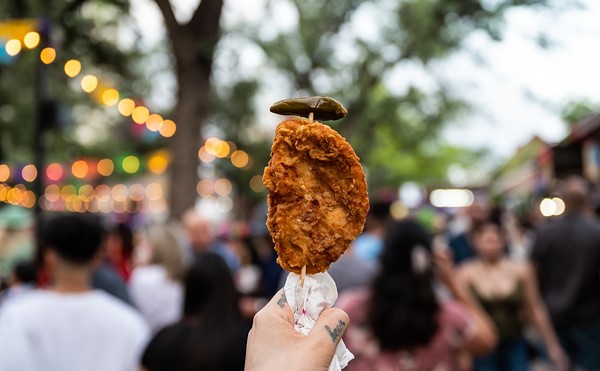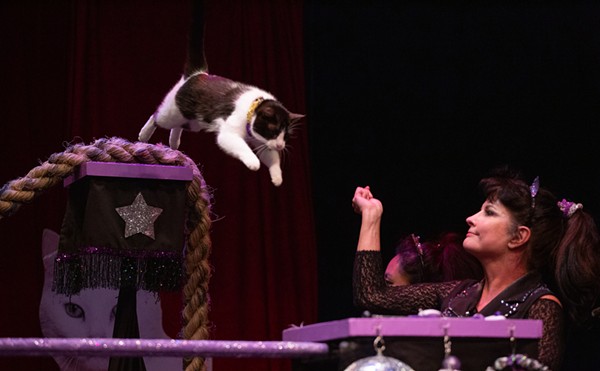Will the new critical biography of Josefina Niggli compel Chicana and Chicano writers to embrace her as their literary madrina? That remains to be seen. (Late in life, Niggli, in characteristically self-possessed fashion, said to an interviewer: “I think it was when I started doing my thing that the door opened for Chicano literature.” Not so fast, ’manita.)
Whether or not we designate Niggli’s work as the headwaters of Chicana/o lit, she remains a sometimes problematic figure whose life and work warrant the kind of close examination that has, until recently, bypassed her. Enter Elizabeth Coonrod Martínez (no relation), who reassesses Niggli’s considerable literary production.
The daughter of a white couple, Josephine Niggli was born in Monterrey at the dawn of the Mexican Revolution. Her U.S.-born parents had relocated to Mexico. In 1925 Niggli and her mother were sent to San Antonio; her father stayed in Monterrey, where she visited him regularly. She would spend most of her adult life in North Carolina, where she taught.
Coonrod Martínez gently chastises San Antonio for not honoring Niggli more prominently, given her ties to numerous local institutions, among them schools she attended (Main Avenue high school and Incarnate Word College), and theater spaces where she worked as actor and playwright (the St. Mark’s Players of St. Mark’s Episcopal Church, as well as San Antonio Little Theatre), and KTSA Radio, where she wrote and produced serial thrillers.
Viewed as someone whose work “explained” aspects of Mexican culture to a U.S. audience at a time when most things Mexican were in vogue among the elite, Niggli’s success as a cultural mediatrix can’t be denied. (She even helped bring Mexico to Hollywood: Her book Mexican Village was adapted for film and released as Sombrero.) But this sort of packaging for easy consumption by a largely non-Mexican, non-Mexican-American audience is antithetical to the socially conscious, anti-accommodation stance that marks Chicana/o letters. (Because Coonrod Martínez uses the terms Chicano and Mexican American interchangeably, some of her less-politicized readers will be denied a fundamental lesson.)
And this is where Coonrod Martínez fails in her inquiry. By neglecting to objectively probe the privilege that made Niggli’s success possible — privilege granted by Niggli’s race and class status — she casts in sharp relief the basis of Niggli’s problematic position within the context of Chicana/o literature. Coonrod Martínez might have drawn a comparison between Niggli and some writers of the Harlem Renaissance, whose work was shunned because it “explained” African-American culture to a predominantly white readership. With that Coonrod Martínez would have given her readers important insight into historical realities, prevailing views of that time, and evolving attitudes where cultural contact is concerned.
While few dispute Niggli’s protean writing skills — she wrote poetry, fiction, screenplays, and works for the stage — fewer still would argue that Niggli’s indigenous characters are just beyond one-dimensional when compared to other characters in her work. And when they are more fully developed, they’re mostly written as a brown response to a white sensibility. For example, the principal figure in “The Quarry,” a section of her book Mexican Village, is the quarry master Bob Webster, who’s biracial, or, more appropriately, mestizo. Niggli writes him as a sympathetic character, the patrón who nobly confronts The Struggle of Identity as a result of his dealings with his Mexican workers.
Coonrod Martínez leaves these stones unturned. She mentions the specific challenges of claiming Niggli as a Chicana literary matriarch in her book’s final pages— almost as an endnote.
It is the generous excerpts of Niggli’s works that comprise Coonrod Martínez’s greatest service to her readers. She includes poems, sections of plays, a fragment of a screenplay, samples of fiction, and journal entries. These are invaluable and allow readers to draw their own conclusions. But these rich, thought-provoking helpings of Niggli’s writing should have been balanced by trenchant analysis and helpful contextualization. Readers should not be deterred by Coonrod Martínez’s wobbly start. She follows irrelevant tangents that further roil these already murky waters. (Does knowing that “Madhatters Café `sic` serves up organic meals and homemade baked goods” in any way illuminate Niggli’s
story?) Coonrod Martínez also gives short shrift to crucial information by presenting it as a loosely strung-together series of encyclopedia entries. Anita Brenner, Dolores Del Río, Pearl Buck, and Margaret Bourke-White are fleetingly mentioned as notable contemporaries of Niggli, but the reader will be left to wonder how the last two are relevant since Coonrod Martínez isn’t clear about her reason for including these particular names. There are also some shameful typos that compromise the book’s credibility, e.g., “Father Miguel Hidalgo y Castilla” and a reference to Elena Poniatowska’s “Hasta no verte, Jesúsa mío.” Ouch.
I’m also left to wonder if Niggli’s sense of being “other” had anything to do with her sexuality, which Coonrod Martínez leaves curiously unmentioned. (There are passing allusions to a female live-in and travel companion.) Let us claim Niggli in all her complexity.
A local, city-wide celebration of Niggli’s work is scheduled for 2010, the centenary of her birth. Perhaps that occasion will afford us an opportunity to reappraise Niggli, a prolific writer who once referred to herself as a “half-way child,” meaning she had one foot in the U.S. and the other in Mexico. •
________________________________________________
READING
Elizabeth Coonrod Martínez
Noon Fri, Nov 2
UTSA Downtown Campus
501 W. Durango
(210) 458-4374















